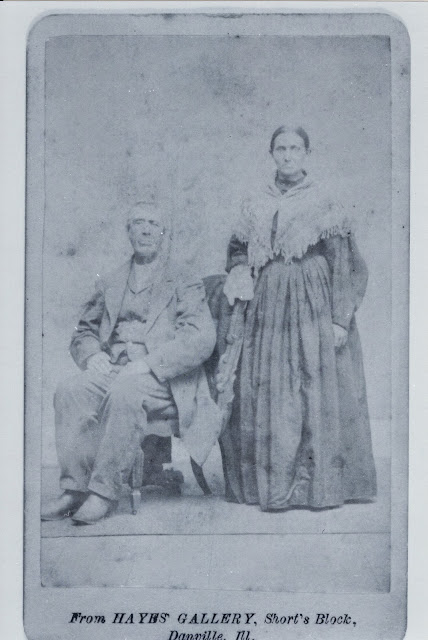These States (or colonies, in the case of Pennsylvania) are the points on the trajectory of my own family's history in North America. It isn't the only trajectory in the larger family. One point of divergence is Indiana. My 2g-grandfather and his three brothers (William, George, Albert) all headed west from Fountain County, Indiana but they and their descendants took different paths from there.
David W (1834-1879).: Indiana, Illinois, Kansas, Missouri, Colorado, Arizona, California
William P. (1842-1924): Indiana, Kansas, Colorado, Indiana, Missouri, Iowa, Oklahoma, California, Texas, Washington
Albert H. (1854-1928): Indiana, Oklahoma, New Mexico, California, Idaho, Nevada
George R. (ca. 1848-?): Indiana, California
Both David and William ended up in southwest Missouri, on the edge of the Ozarks. David died in 1879 in Newton County, on the Kansas border. William moved from Springfield to Walnut Grove to Mountain Grove, Missouri (in Wright County). He died in 1924 in Minneola, Kansas, where he was living with his daughter and her husband. I wonder if David's and William's descendants in Missouri knew of each other. It would not surprise me if they did, although I have no direct evidence of it. I would love to discover correspondence between and among them.
Each brother had a different reason for moving west. The tradition in my family is that David W. was advised by doctors to move to a healthier climate. Perhaps he had tuberculosis; he died quite young, at 44.
I cannot be certain about the reason or reasons for William P.'s move west. He had married in 1865 and had two daughters before divorcing in 1873 (according to his Civil War pension application). He remarried in 1875 and apparently lived in Kansas before they moved to Missouri. In 1880 he is enumerated as a miner in Independence, Colorado, while his wife and four-year-old son are enumerated in Vermillion County, Indiana.
Albert H. headed west some time after the death of his wife in 1903. As the youngest child of the family, he had stayed on the family farm in Indiana. His family has preserved the tradition that he first moved to Oklahoma, then to New Mexico, then finally to Kern County, California where his son Albert R. had moved some years earlier.
I know the least about George R. When his sister Nancy died in 1919 her obituary stated that George was living in California. I have no firm information about what happened to him. He doesn't appear in the California death indexes, nor can I find him in the Great Registers. Repeated searches in census records from 1880 to 1940 have failed to find him. He was alive in 1884, when his father's will was written: there, he is left a buggy by his father. If I could get to Fountain County I would read the local newspapers, check probate records, church minutes.


